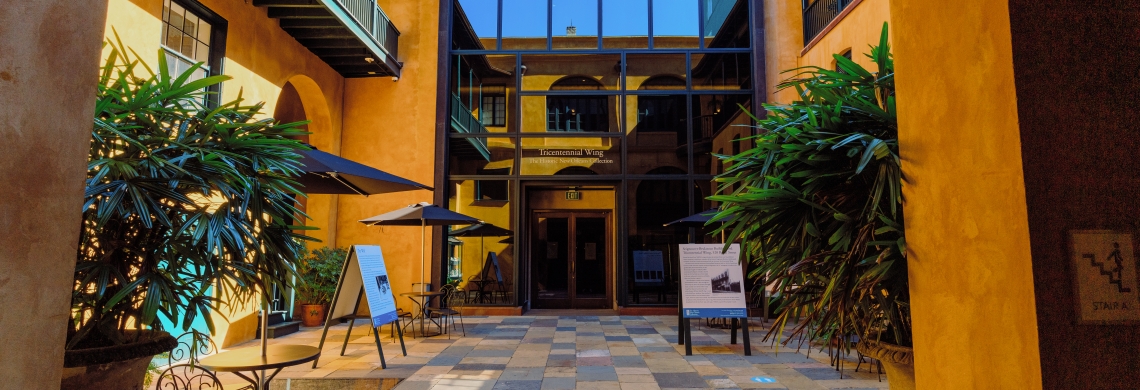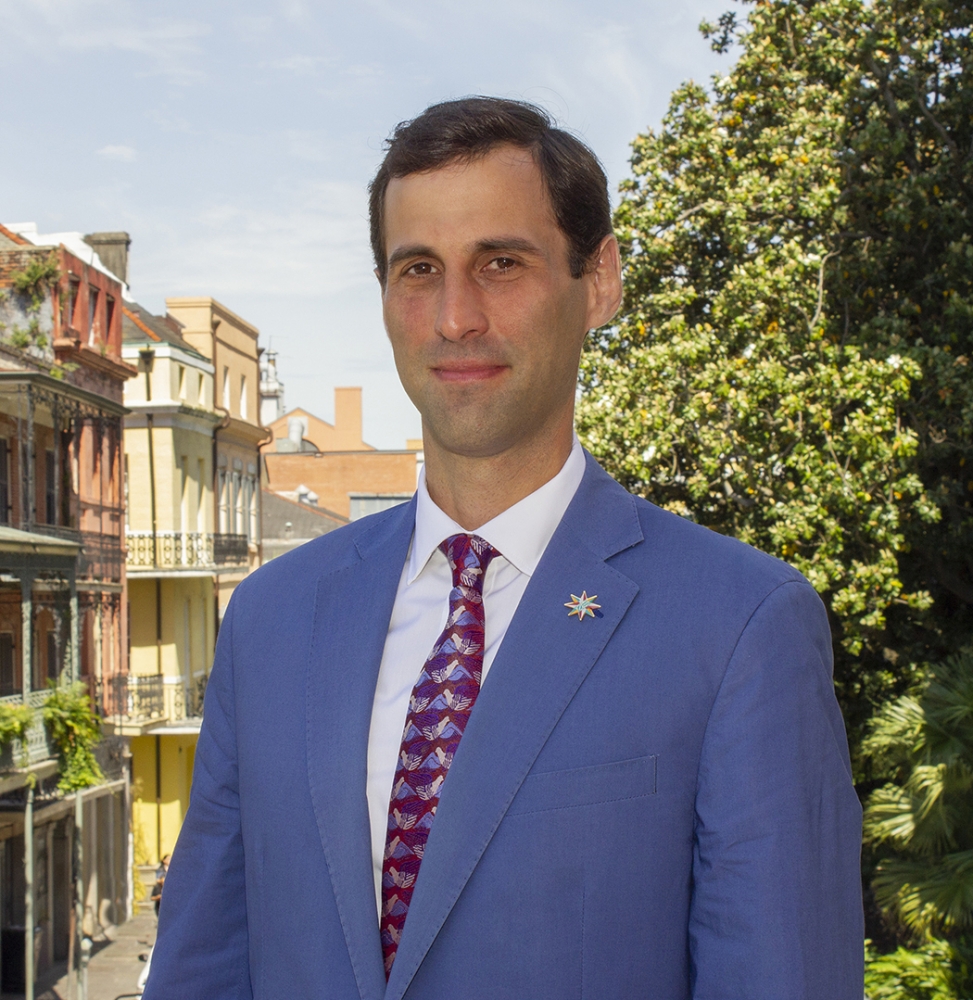The Historic New Orleans Collection (THNOC) is a museum, research center, and publisher dedicated to the stewardship of the history and culture of New Orleans and the Gulf South.
Founded in 1966 through the estates of General L. Kemper Williams and Mrs. Leila Moore Williams, THNOC has helped local residents and visiting tourists better understand the multicultural history of the region through thought-provoking exhibitions; original books, periodicals, and articles; and its public research center. In addition, it offers a robust programming schedule and an extensive array of educational resources for teachers and students of all levels.
THNOC operates three campuses in the heart of the French Quarter. In observance of our founders’ request to make historical resources available to all, admission is free.
As a publisher, THNOC produces award-winning original books exploring the history, art, music, culture, and decorative arts of the region. Our magazine, the Historic New Orleans Collection Quarterly, surveys the region’s history as it relates to THNOC's projects and programs.
Message from the President and CEO
Welcome to hnoc.org, the online extension of everything we do at The Historic New Orleans Collection. Here, you can find out about our exhibitions, books, public programs, and more. For researchers, we have a fully searchable online catalog featuring records and images of our holdings. We host several databases that allow users to search centuries’ worth of French Quarter property records, newspaper listings, cemeteries data, and more. Follow your interests through our virtual exhibitions, educational activities, and stories of the historic French Quarter structures that comprise our campuses.
Historic buildings do not just exist but evolve over time. They must be maintained, restored, and sometimes even recovered. We know this well at The Historic New Orleans Collection, where our French Quarter buildings—13 structures built in four different centuries, from the Spanish colonial period to the present—are not mere shelters or vessels of activity. They are large-scale artifacts that embody our mission to steward the history and culture of New Orleans by preserving tangible objects and providing public access to them.
Over the years, THNOC has continuously restored, renovated, and constructed anew in pursuit of this mission—practices we inherited from our founders, who started this work themselves in 1938, when they purchased the Merieult House at 533 Royal Street, as well as adjacent buildings on Royal and Toulouse, and began converting them into a residence.
533 Royal Street Renovation
The next phase of our care for these historic buildings commenced in 2023, as we began a years-long project to renovate and improve the structures at 533 Royal Street. The project will preserve the historic and structural integrity of the buildings and their foundational usage as museum spaces—the Williams Residence house museum and galleries devoted to the display of our permanent collections. At the same time, it will renew the buildings by creating greater resiliency, accessibility, and engagement.
Over the coming months we will learn, through architectural and historical investigation of the structures themselves, what must and can be done. Four expert firms have been chosen to assist in this effort, building on months of research, preparation, and evaluation conducted by THNOC staff, leadership, and our board of directors.
Heritage Resource Management Consultants, an independent firm run by Brent Fortenberry, director of the historic preservation program in the Tulane University School of Architecture, will generate a historic-structures report using 3D laser scans of the buildings, materials analysis, and archaeology as needed.
In addition to Heritage Resource Management, THNOC has hired two architecture firms and one museum design firm to assist in the 533 Royal project. New Orleans firm Trapolin-Peer Architects will join forces with Hartman-Cox of Washington, DC, to carry out design work on the structures, while the Philadelphia-based firm Metcalfe Architecture and Design will help reimagine the buildings as museum spaces.
THNOC staff and leadership will work closely with these firms throughout the course of the project to ensure that the result meets the high standards set during The Collection’s decades of care. Though the permanent exhibition at 533 Royal Street, the Louisiana History Galleries, is now closed, many of the artifacts displayed there will move over to 520 Royal Street, in the French Quarter Galleries, to remain on view. The Williams Residence, once home to our founders General L. Kemper and Leila Williams, will eventually be returned to service as a house museum, giving visitors a portal into French Quarter life as it was lived in the mid-20th century. Outcomes for other spaces on campus, some of which have housed offices for THNOC staff members for many years, are yet to be discovered.
I invite you to follow our progress on this ambitious undertaking by following our social media accounts, subscribing to our weekly email newsletter, and checking back here at hnoc.org for updates.
Stewardship of the history and culture of New Orleans, Louisiana, and the Gulf South is an ongoing but ultimately greatly rewarding calling. The 533 Royal Street project is THNOC’s next great expression of that mission. —Daniel Hammer
KultureCity® Certification
HNOC is pleased to be recognized as a Certified Sensory Inclusive Venue by KultureCity®, a leading nonprofit organization dedicated to promoting inclusivity and accessibility for individuals with sensory needs. This means that our staff has been trained by leading medical and neurodivergent professionals on how to recognize visitors’ sensory needs and how to handle a sensory overload situation. Visit KultureCity's website to view their social story for HNOC.

General L. Kemper and Leila Williams

 Portrait sketches of Leila Hardie Moore Williams and General L. Kemper Williams (detail); 1938; pencil; by Clarence Mattei; 75.135.1-.2 WR
Portrait sketches of Leila Hardie Moore Williams and General L. Kemper Williams (detail); 1938; pencil; by Clarence Mattei; 75.135.1-.2 WR
Lewis Kemper Williams (1887–1971) was born in Patterson, Louisiana, in 1887. As a young man, he entered the family lumber business, becoming secretary-treasurer and, later, president of the F. B. Williams Cypress Company. From 1949 until his retirement in 1971, he served as president, director, and then chairman of the board of Williams Inc., a company with broad interests in land, mineral royalties, and investments. Williams served in the US army in World Wars I and II, rising to the rank of brigadier general.
In 1920 shortly after his tour of duty in World War I, Williams married New Orleans native Leila Hardie Moore (1901–1966) in New London, Connecticut. During their life together, the Williamses demonstrated a keen sense of civic and philanthropic responsibility. Beneficiaries of their generosity included the University of the South, Boy Scouts of America, Christ Church Cathedral, St. Anna’s Asylum, the Junior League, and the New Orleans Philharmonic Symphony Orchestra. In 1937 Kemper Williams received one of the city’s highest honors: for his leadership of the New Orleans Housing Authority, he was awarded the Times-Picayune Loving Cup.
In 1938 the Williamses bought two properties in the French Quarter—the Merieult House on Royal Street and a late 19th-century residence contiguous to the Merieult House, facing Toulouse Street. The latter property was their home for 17 years, during which time they amassed a substantial collection of important Louisiana artifacts—the founding holdings of The Historic New Orleans Collection.
Kemper and Leila Williams Foundation
With the goal of making their collected materials available to the public for future generations, the couple established The Historic New Orleans Collection. With their deaths—hers in 1966 and his in 1971—the Kemper and Leila Williams Foundation was established to ensure stable, long-term financial support for The Collection. A seven-member board of directors oversees the institution’s operation, providing guidance and insight.
Board of Directors
Bonnie Boyd, Chair
John Kallenborn, Vice Chair
E. Alexandra Stafford
Lisa H. Wilson
G. Charles Lapeyre
Mayra Pineda
Tod Smith
Drew Jardine, Emeritus
Hilton S. Bell, Emeritus


